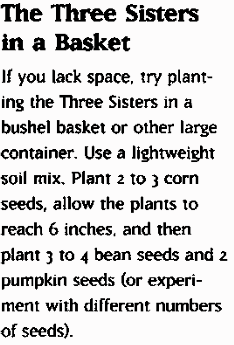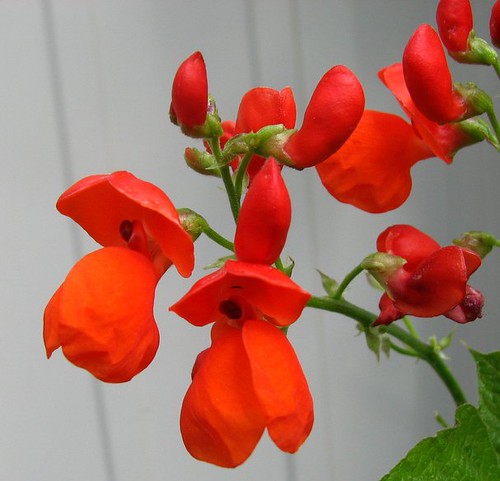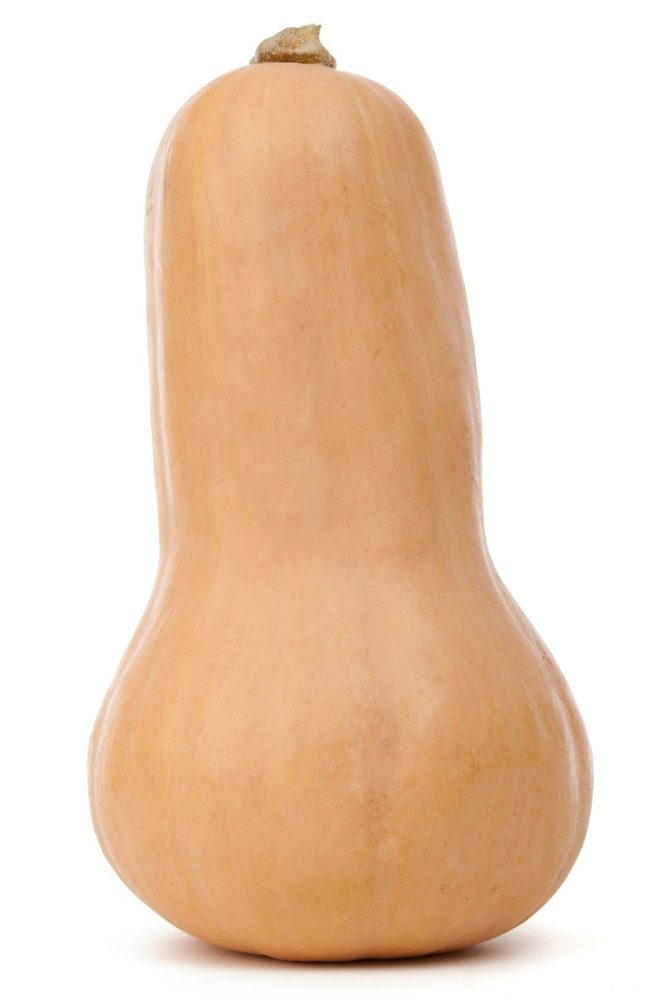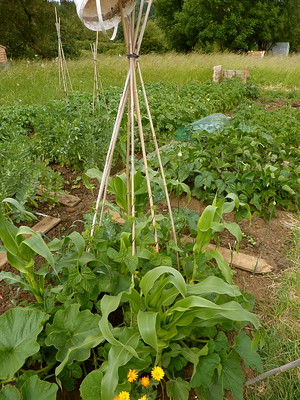Companion planting is the practice of growing different plants nearby each other to purposely form a mutually beneficial relationship. Happy plants, happy gardeners!
One of the most well-known companion planting setups is the Three Sisters method, which features corn, climbing beans, and squash. Indigenous peoples perfected the method, which has a long, well-recorded history of success. According to an article from the National Agricultural Library,
Corn provide[s] support for beans, beans [provide] nitrogen through nitrogen-fixing rhizobia bacteria that live on the roots, and squash and pumpkins [provide] ground cover to suppress weeds and inhibit evaporation from the soil.
We chose a variety of Natural Sweet Corn in the hopes that it will be easy for corn newbies (most of us, let's be honest) and Butternut Squash because it's one of the most popular culinary squash varieties out there.
According to a 2013 Mother Earth News article, some varieties of pole bean are too aggressive to be effective in a Three Sisters arrangement, so a climbing type called a "runner" is a more effective choice for climbing a corn stalk. We selected the Scarlet Runner bean, as it also features red flowers that attract hummingbirds.

The idea is to get the three plants to grow in tandem. Cornell suggests starting the corn in late May first, so it has time to grow. Once the corn grows about 6 inches tall, then you can plant the squash and beans. This gives the corn more time to be able to grow big enough to act as a trellis, but it can still be helpful to set up rods in a cone shape to help them grow and add nitrogen to the soil before the corn is tall enough (or as a failsafe! You never know when you're trying something new!).
When we packaged our Three Sisters Mix, we used the proportions suggested by Cornell's Marcia Eames-Sheavly for small spaces, although you may need to pick up supplements to fit your needs.
However, we also packaged each type of seed individually, so you could supplement if you wanted to try other configurations. For more information, read Marcia Eames-Sheavly's suggestions (link in the references).
We hope you give it a try and have a great experience learning about how companion growing works!
INDIVIDUAL PLANTING INSTRUCTIONS:
Natural Sweet Corn (Hybrid Bicolor Sh2 Corn)

How deep? 3/4-1" deep
How far apart? 6-7" apart (or 2 seeds every 9," thinning to 1 plant), rows 30-36" apart.
How much water? Soil should be moist but not wet.
How much sun? Full sun.
When to harvest? 18-22 days after the silks show, when kernels are plump and milky, coinciding with a drying and browning of external ear silks.
Put on your expert hat: Although we're experimenting with companion growing, the seed package recommends planting in blocks of at least 4 rows for proper pollination needed for well-filled ears. Succession plantings can be made into early summer.
IMPORTANT! Super sweet corn is different from normal sweet corn because it contains a gene called "shrunken-2" or "sh2" for short. If you plant to save seeds, you should isolate home garden plantings of super sweets 25' (acreage plantings 100') from non-super sweet varieties or by a 10 day planting date/maturity difference. Extensive crossing will cause toughness in both types.
Scarlet Runner Bean
How deep? 1" deep.
How far apart? About 6 seeds per foot. When seedling have true leaves, thin to 4-8" apart.
How much water? Average moisture.
How much sun? Full sun.
When to harvest? Edible flowers can be harvested when they show strong color, as buds or fully-open flowers. Unopened buds can be stored in the fridge 2-3 days on a slightly damp towel. Beans can be eaten, but pick and cook them before they become fibrous (though they remain tougher than most beans).
Waltham Butternut Squash
 These plants can be started indoors, or sown directly.
These plants can be started indoors, or sown directly.
Indoors: 2-3 seeds per 2" container about 3 weeks prior to transplanting. Thin to 1 plant/container or cell with scissors. Harden plants 4–7 days prior to transplanting. After danger of frost has passed, transplant out according to the spacing recommendations for each variety. Handle seedlings carefully; minimal root disturbance is best.
When? About 3 weeks prior to transplanting.
How deep? 1/2-1" deep.
How many? 2-3 seeds per 2" container.
Direct Sow:
When? After frost.
How deep? 1/2-1" deep.
How many? 2 seeds, then thin to 1 plant when seedlings are established.
How far apart? Transplants or direct sowing should be 24-36" apart.
How much sun? Full sun.
When to harvest?
References
Eames-Sheavly, Marcia. (1993). "The Three Sisters: Exploring an Iroquois Garden." Cornell Cooperative Extension. https://gardening.cals.cornell.edu/lessons/curriculum-classics/the-three-sisters-exploring-an-iroquois-garden/
Marsh, Emily. The Three Sisters of Indigenous American Agriculture. National Agricultural Library. https://www.nal.usda.gov/collections/stories/three-sisters#:~:text=and%20the%20Southeast.-,The%20Iroquois%20and%20the%20Cherokee%20called%20corn%2C%20bean%2C%20and%20squash,squash%20throughout%20of%20the%20field.
Mahr, Susan. Scarlet Runner Bean, Phaseolus Coccineus. Wisconsin Horticulture, Division of Extension. https://hort.extension.wisc.edu/articles/scarlet-runner-bean-phaseolus-coccineus/#:~:text=The%20edible%20flowers%20have%20a,are%20best%20sliced%20before%20cooking.
Weaver, William Woys. “NATIVE AMERICAN GARDENING: The Three Sisters and More.” Mother Earth News, no. 256 (February 2013): 42–48. https://search.ebscohost.com/login.aspx?direct=true&db=a9h&AN=84947315&site=ehost-live.



